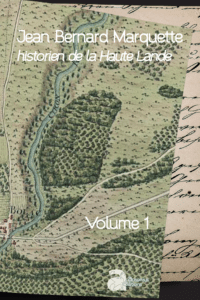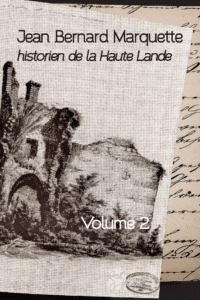UN@ est une plateforme d'édition de livres numériques pour les presses universitaires de Nouvelle-Aquitaine
Type de document : Chapitre de livre
Le château de Villandraut dont les ruines imposantes se dressent aujourd’hui à la lisière des landes du Bordelais est bien connu des spécialistes de l’histoire castrale et des historiens de la papauté d’Avignon
Le château de Villandraut dont les ruines imposantes se dressent aujourd’hui à la lisière des landes du Bordelais est bien connu des spécialistes de l’histoire castrale et des historiens de la papauté d’Avignon.
Le pays de Labouheyre constitue, avec celui de Sabres qui le borde au levant, le cœur même de la Grande Lande de Gascogne. Lorsqu’il apparaît dans les textes au début du XIIIe siècle, il est, à peu de chose près, définitivement constitué puisque les limites de la prévôté médiévale se retrouvent dans celles de la juridiction de l’époque moderne.
Communes d’Aillas, Savignac, Pondaurat, Puybarban, Castillon-de-Castets, Bassanne, Barie
Cité épiscopale depuis le Ve siècle, plus tard étape sur le chemin de Vézelay à Saint-Jacques-de-Compostelle puis, aux XIVe et XVe siècles, ville frontière, Bazas a, sans le moindre doute, occupé tout au long du Moyen Âge un rang honorable parmi les villes de Gascogne.
Vers 1135-1140, Pierre, vicomte de Marsan, décida d’édifier un château dans la partie orientale de ses terres, à la confluence de la Douze et du Midou ; mais il voulut, en même temps, établir à proximité un village fortifié : c’est ainsi qu’est né Mont-de-Marsan.
1. Auzac : Cf. J. B. Marquette, Monuments et œuvres d’art du Bazadais : L’église Saint Jean-Baptiste d’Auzac, Les Cahiers du Bazadais, n° 6, avril 1964 ; n° 15, déc. 1968.
Sur un plan du XIXe siècle, la ville de Bazas apparaît comme un ensemble parfaitement délimité de forme triangulaire dont les contours épousent ceux d’un éperon orienté vers l’est, délimité par la confluence de deux ruisseaux
Bazas (Bazadais), Der Zeitpunkt der Gründung ist unbekannt; es wird das Ende des 4.Jh. angenommen.
Merci à Valentine Delattre, Clément Hartmann, Viviane Lalande, Rodolphe Meyer et Allessandro Roussel pour m’avoir autorisé à utiliser librement des images de leurs vidéos.
À travers cet ouvrage, j’ai essayé de dresser un portrait de la vulgarisation scientifique sur You-Tube en expliquant en quoi elle se distingue des autres formats de communication scientifique. Son recours aux émotions permet de débloquer cer-tains « verrous » culturels dans la circulation du savoir scientifique. Cependant, il ne faut pas oublier que la vulgarisation peut, malgré ses bonnes inten-tions, créer de nouvelles formes d’exclusion. En choisissant certains mots, certaines références, en mettant en avant certaines figures ou certaines ma-nières de parler, elle peut donner plus de valeur à certains savoirs qu’à d’autres, ou encore à incarner la science selon certains standards sociaux. Une vulgarisation plus juste serait celle qui adopte plu-sieurs points de vue, plusieurs figures incarnantes, qui respectent différents types de savoirs et qui cherchent à inclure au lieu de trier. Enfin, si les émotions peuvent rapprocher la science du public, il convient d’ouvrir un véritable espace d’écoute et de découverte, pour tous et toutes, sans distinction et non un simple spectacle pour un public « par défaut » qui suit le modèle standard de l’homme occidental, acculturé à la science, etc. Vulgariser, c’est peut-être cela : faire sentir que la science n’est pas seulement un ensemble de faits, mais une ma-nière de voir, de comprendre et de ressentir le monde, quelle que soit la situation dans laquelle nous nous retrouvons.




